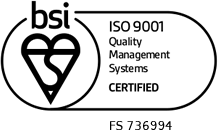This sector not only covers materials for boats and ships, but also submersibles (including increasingly, unmanned underwater vehicles (UUVs)), drilling platforms and other offshore structures (including increasingly offshore wind turbines and tidal turbine installations), undersea pipes and cables, wharfs, jetties and piles, and so on. Materials are required not only for large scale structures such as ships hulls, but also: gratings, ducts, shafts, piping, valves, bearings, propellers, turbine blades, and even sails.
Materials technology for marine and maritime applications present a number of unique challenges. Perhaps foremost amongst these requirements are:
- the ability to resist corrosion and degradation by salt and seawater and electrolytic reaction
- the ability to withstand prolonged exposure to UV and wind damage
- the ability to survive for extended periods with little or no maintenance or monitoring
- In addition to general strength, toughness, durability, and light weight, other properties most often sought are: fire resistance, resistance to fouling (by marine organisms), and for many specialist and military applications: low magnetic capacities, resistance to underwater shock loads.
Whilst steel is currently still the material of choice for most larger vessels, for smaller vessels, a variety of composite materials have been in use since the 1950s. These include: fibre-reinforced polymers (FRP), Glass-fiber reinforced plastic (GFRP), Carbon-fiber-reinforced polymers (CFRP), Aramid Fiber Reinforced Polymer (AFRP) (heat resistant), thermoset composites, thermoset resins as matrix material. Composites based on carbon nanotubes and polymers are also an active area of development at present, particularly for explosion proof structures and electromagnetic shielding. Similarly, nano-aluminium composites for their toughness and low weight. Vessels built using such composites are up to 50% lighter than equivalent-strength steel vessels, which ultimately translates into higher top speeds, better manoeuvrability and lower fuel costs
Specialised coatings of all sorts are in widespread use in the marine sector, and there is a particular focus on nano coatings to add new functionalities and properties to existing materials – eg: melting point, fluorescence, electrical conductivity, magnetic permeability, and chemical reactivity – all alter with particle size. Coatings based on carbon nanotubes also feature, to provide resistance to saltwater corrosion and biological fouling – reducing the need for otherwise environmentally harmful chemicals for that purpose.
Interest in multifunctional materials also features in this sector. For example, Multifunctional Structure-Battery Composites for unmanned underwater vehicles (UUVs) – relocating the battery cells into the UUV skin.
Energy systems too are very important, not only for long endurance and unmanned applications but also for reducing environmental harms. For example, as a result of the International Maritime Organization’s new sulphur cap for fuel oils coming into force in January 2020, carbon nanomaterials are being engineered that act as adsorbents, for the desulphurisation of fuels – a much better solution than large and expensive exhaust ‘scrubbers’. A further example – development of large-scale nano lithium titanate battery systems, for (largely) military shipboard UPSs (uninteruptable power supplies).
Biomimetic materials are also an exciting area of research and development at present. For instance, super-hydrophobic surfaces/structure utilising hyper-branched polymer coatings with hierarchic nano/micro textures to better trap air at boundary layer, maximise slip length and reduce hull drag – are based on the leaf of the lotus plant. Research to similar ends – reducing hull drag and also to prevent fouling – mimics the microstructure/nanostructure riblets of shark and whale skin. Whilst challenges still exist in scaling this technology up and reducing costs of manufacture, it is an area that could bring great rewards, since, for example, anywhere between 20 to 80% of a crafts propulsive power may be lost to turbulent skin drag, largely due to fouling.
Many other active areas of research and development exist – including applications of superelasticity and shape memory materials, self repairing materials, composites combined with sensor arrays, active camouflage and cloaking, and many more. (eg: see sections on military and defence, energy, building and architecture, etc).
Marine & Maritime Applications of Piezo-materials
Marine industry has been making use of piezoelectric materials in several ways.
First is the well-established underwater sensing, and second is exploration of sea bottom. Sonar hydrophones are present in every ship, both commercial and military, for navigation and sensing. Hence, they find applications in structures such as submarine, warships or torpedoes.
Commercial ships are also making use of other commercially available solutions.
Another field related to defence and commercial ships, and also connected with underwater sensing, is mine hunting. Its growth is attached to an increasing fear that some countries will mine seas, such as the Red Sea, in order to interrupt oil transportation infrastructure. Homeland security system for harbour protection is another growing field. Sonar hydrophones are currently very precise and are able to provide 2D or 3D images of what is under the water, within a two kilometres range.
Underwater sensing is also utilized in environmental science and research programs, for instance, for studying marine animals. Portable devices that serve as marine position indicators are another example.
Perhaps, the fastest growing area in the marine industry is exploration of the sea bottom.
Driven by high oil prices, scanning of ocean floors in search of oil reservoirs is a growing trend. Another, surprisingly growing market, is founded on treasure hunters, who agree to pay a lot of money for equipment that accurately maps the bottoms of the oceans.
Besides the above two main groups mentioned, there are other uses of piezoelectric materials in the marine industry. For instance, since ships are usually propelled by diesel engines, piezoelectric fuel injectors are also present in such vehicles.



